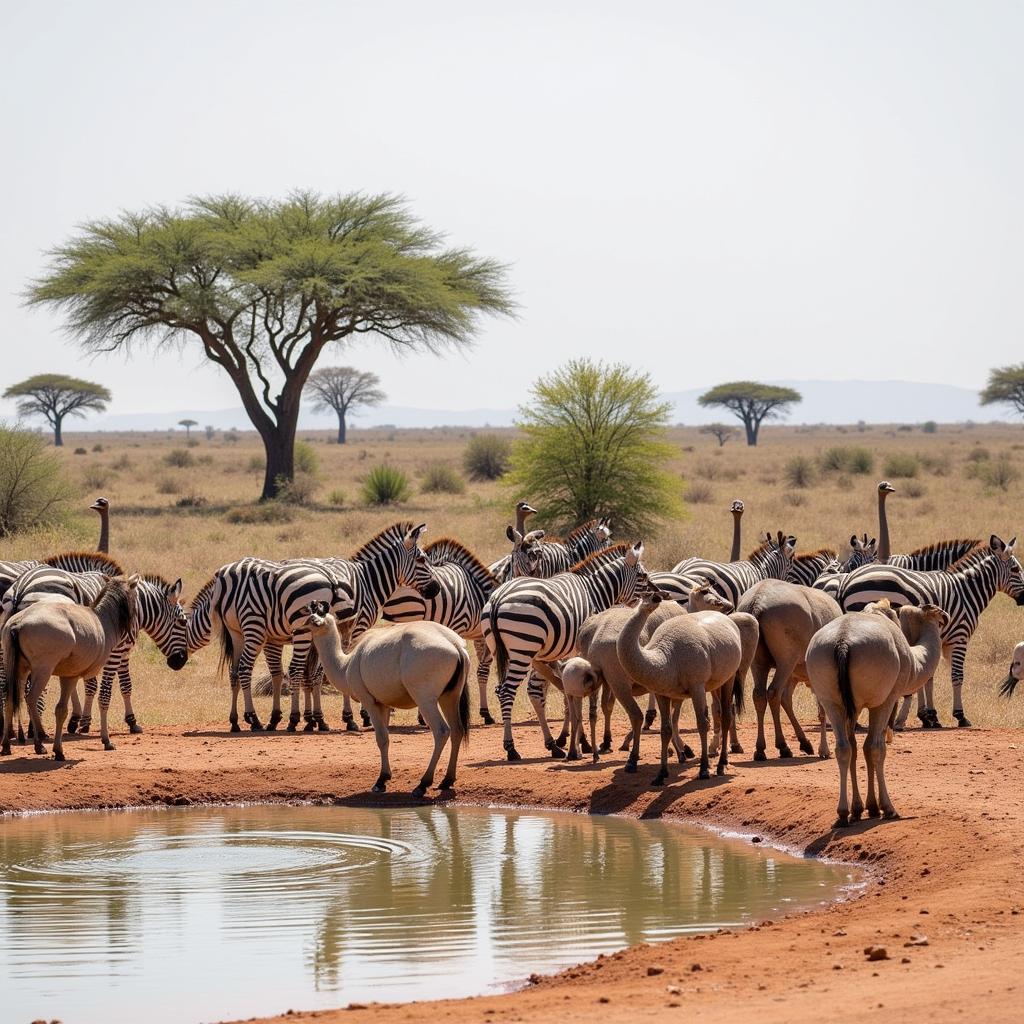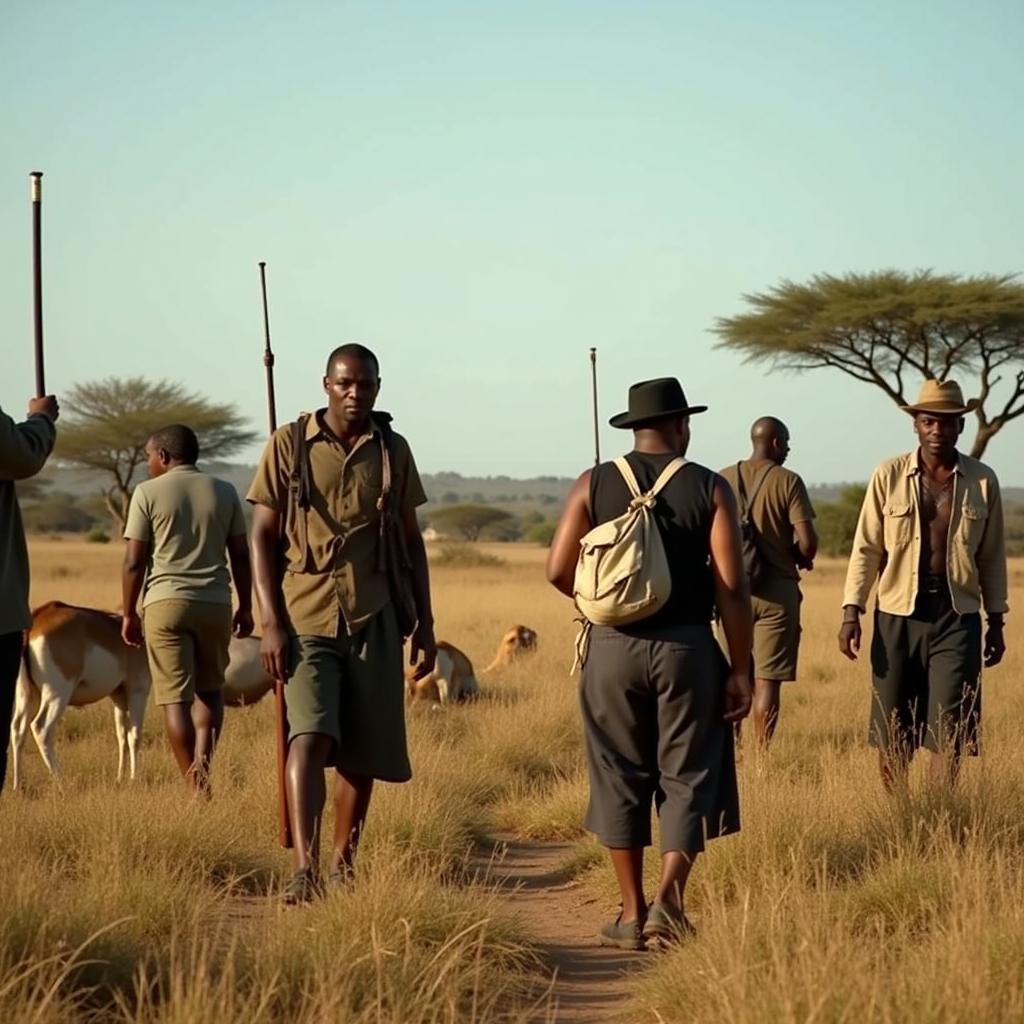Unveiling the Secrets of African Deserts for IELTS GT Reading
The vast and enigmatic African deserts, stretching across the continent with their mesmerizing landscapes and unique ecosystems, often pique the curiosity of IELTS GT (General Training) test-takers. Understanding the characteristics, challenges, and cultural significance of these arid landscapes can be valuable for the reading section of the exam.
African Deserts: A Test of Survival and Adaptation
African deserts, including the Sahara, Namib, and Kalahari, present a formidable challenge to life. Low rainfall, extreme temperatures, and limited vegetation create a harsh environment where only the most resilient species can thrive.  Camels traversing the Sahara Desert dunes
Camels traversing the Sahara Desert dunes
The Sahara: The World’s Largest Hot Desert
Spanning over 9.2 million square kilometers, the Sahara Desert is a land of extremes. Towering sand dunes, rocky plateaus, and arid plains characterize its diverse topography. Temperatures can soar beyond 50°C (122°F) during the day, while nights can be surprisingly cold. Despite these challenges, the Sahara is home to a surprising array of life, from hardy plants like the acacia tree to resilient animals like the fennec fox and the addax antelope.
“The Sahara is a testament to the power of adaptation. Life, in its most tenacious forms, clings to existence in this seemingly desolate landscape, reminding us of the incredible resilience of nature,” notes Dr. Amani Jabari, a leading researcher in desert ecology at the University of Nairobi.
The Namib: Ancient Sands and Unique Wildlife
Stretching along the southwestern coast of Africa, the Namib Desert is considered to be the oldest desert in the world, with its origins dating back millions of years. Its iconic red sand dunes, sculpted by the wind into breathtaking formations, are a sight to behold. The Namib is also home to unique and fascinating creatures, such as the desert elephant, the welwitschia plant (which can live for over 1,000 years), and the fog-basking beetle, which has evolved a remarkable method of collecting water from the morning mist.
The Kalahari: A Semi-Desert with Surprising Biodiversity
The Kalahari, often referred to as a semi-desert due to its relatively higher rainfall compared to the Sahara and Namib, covers a vast area of Southern Africa. While it may lack the towering sand dunes of other deserts, the Kalahari boasts a surprising diversity of life. Vast grasslands interspersed with acacia trees provide habitat for a wide range of animals, including lions, elephants, giraffes, and meerkats.  Wildlife gathering at a Kalahari Desert watering hole
Wildlife gathering at a Kalahari Desert watering hole
The Importance of African Deserts in IELTS GT Reading
Understanding the key features of African deserts can be beneficial for the IELTS GT reading section. Passages may focus on:
- Adaptation of plants and animals to desert environments
- The impact of climate change on desert ecosystems
- The cultural significance of deserts to indigenous communities
- Tourism and conservation efforts in desert regions
Conclusion
African deserts, with their stark beauty and challenging conditions, offer a glimpse into the resilience of life and the intricate workings of nature. Preparing for the IELTS GT reading section by understanding the key characteristics and significance of these arid landscapes can provide test-takers with a valuable edge.
FAQs
1. What is the difference between a hot desert and a cold desert?
Hot deserts, like the Sahara, experience high temperatures throughout the year, while cold deserts, such as the Gobi Desert in Asia, have cold winters with snowfall.
2. What are some common adaptations of desert plants?
Desert plants often have deep roots to access underground water, thick leaves to reduce water loss, and spines or thorns to deter herbivores.
3. What is desertification, and why is it a concern?
Desertification is the process by which fertile land becomes desert due to factors like climate change, deforestation, and unsustainable agricultural practices. It poses a significant threat to biodiversity, food security, and livelihoods.
4. How do desert animals survive in such harsh conditions?
Desert animals have developed remarkable adaptations, such as nocturnal behavior to avoid the heat, the ability to conserve water, and specialized diets that minimize water loss.
5. What is the role of oases in desert ecosystems?
Oases serve as vital sources of water and vegetation in deserts, supporting a higher concentration of biodiversity and often serving as crucial stopping points for nomadic communities and wildlife.
Need More Information?
Explore more fascinating insights about African deserts and other captivating aspects of the continent on our website.
Contact us for any inquiries:
Phone Number: +255768904061
Email: kaka.mag@gmail.com
Address: Mbarali DC Mawindi, Kangaga, Tanzania
Our dedicated team is available 24/7 to assist you.

